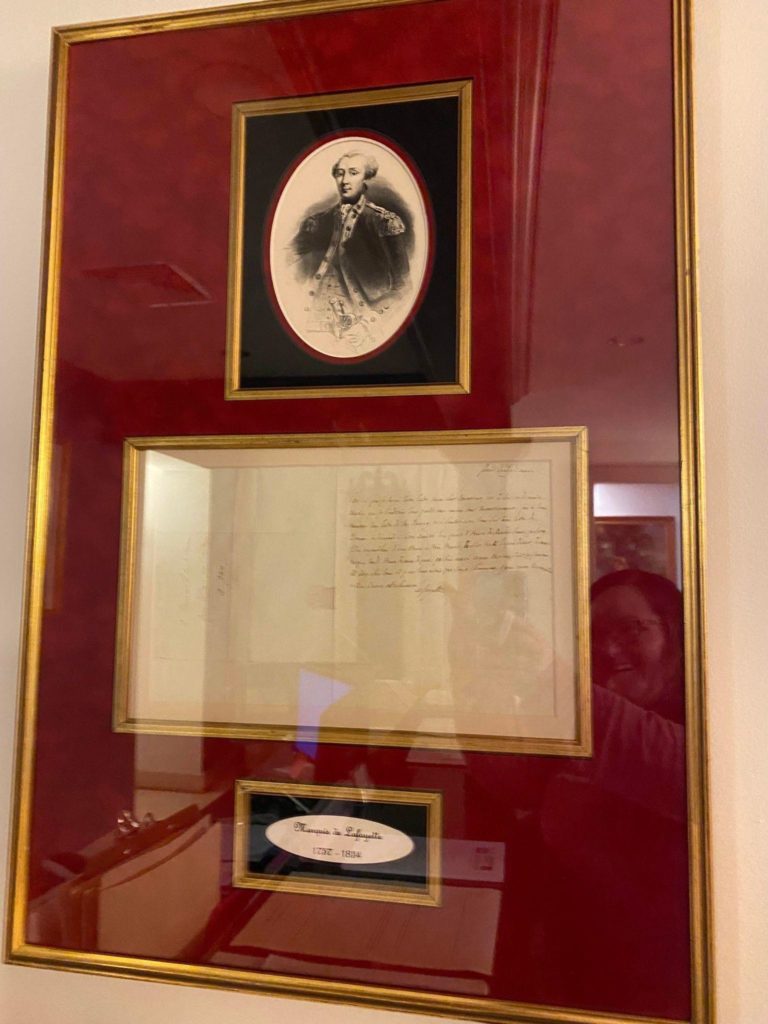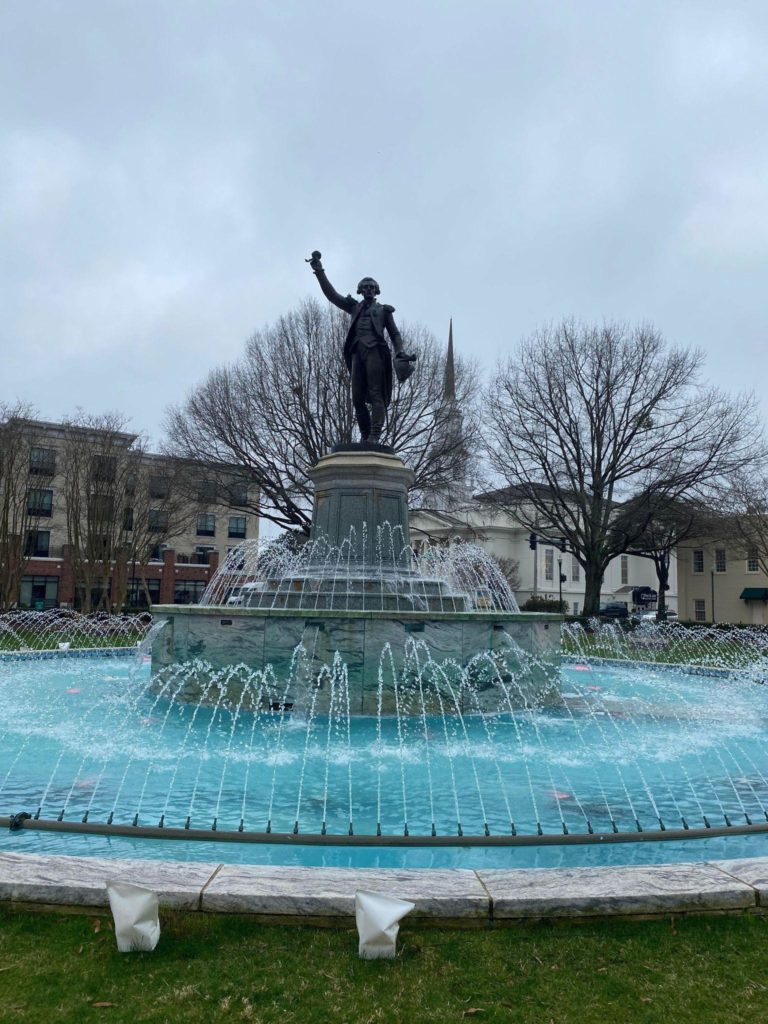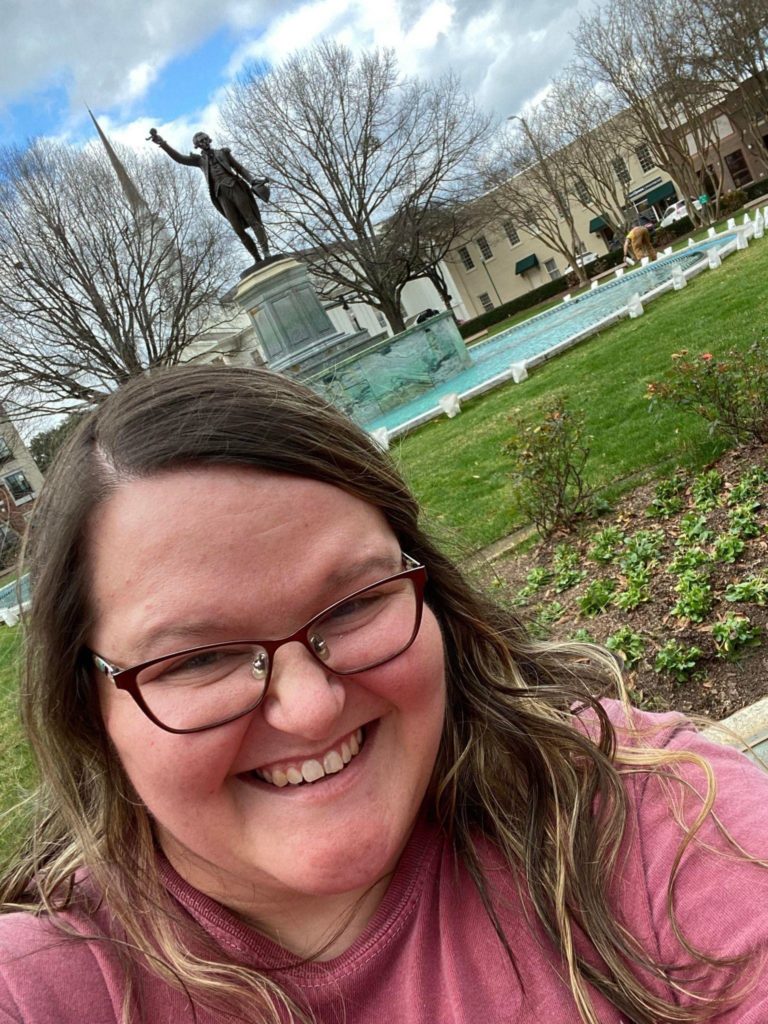Visiting the Marquis de Lafayette
The Marquis de Lafayette was a French aristocrat who served in the American army as a Major General during the Revolutionary War. The Marquis was serving in France in the Royal Army when he heard about the ongoing struggle in the American colonies against Great Britain. The Marquis decided that he wanted to fight for the American forces and after making arrangements with Silas Deane, boarded a ship (which he personally paid for) and made his way to America to serve under George Washington. The Marquis de Lafayette went on to become a hero to the American colonists during his service and was eventually invited back to America in June of 1824 where he remained a guest until September of 1825.
As a lover of history (and more specifically, a certain famous Frenchman), I have been traveling throughout the Southeast to visit places that were historically significant or connected to the Marquis de Lafayette. I recently got a chance to visit the city of LaGrange, GA and speak with members of the Lafayette Alliance there and see some of the town’s tributes to the Marquis.

I began my visit to LaGrange by meeting Dr. Richard Ingram, the chair of the Lafayette Alliance at the local Legacy Museum on Main that was connected to the Troup County Archives Building. While at the museum, Dr. Ingram showed me some recommended readings on Lafayette before taking me to the Archives Building and introducing me to Alex Hughes, the secretary of the Lafayette Alliance and an employee of the Troup County Archives. Alex proceeded to show me a letter that the Archives Building had on display that was written by Lafayette on May 1, 1807, to James Donatien Le Ray de Chaumont. While the letter itself was written in French, Alex provided me with a translation of the letter so that I could keep up! Alex provided me with information about how the Archives Building came to possess the letter and the story of its framing, before showing me a painting by a local high school senior of the fountain that I was about to visit.
Just before leaving the Archives Building, Dr. Ingram and Alex told me the history of the fountain in town square and then Dr. Ingram escorted me to Lafayette Square, where standing tall in the center was the statue and fountain of the Marquis de Lafayette. The statue was commissioned by Dr. Weights G. Henry Jr., who was the president of LaGrange College, in 1974. The project was completed in 1975. According to Dr.

Ingram and Alex, the statue weighs just over 1,600 lbs and had to be brought in, in multiple sections and put together on site. The statue was cast from an original statue in
LePuy-de-Velay, France and shows Lafayette in his French National Guard uniform holding his feathered hat in one hand and holding a cockade in his other hand. You might also notice the pose that Lafayette is standing in, the motion of it, and the importance that he bestows upon the Cockade. If you look closely at the fine details of the statue, you can also see the Marquis has two medals pinned to his jacket. One medal is a medal given to him by King Louis XVI for valor during the American Revolutionary War. The other is a medal showing the insignia of a fraternal order of Revolutionary War officers. If you visit nothing else in LaGrange, the statue itself is awe-inspiring and worth a visit!
A Special Note:
The Cockade that Lafayette holds in his statue was designed by the Marquis himself. The original French cockade was pure white, but during the beginnings of the French Revolution, the French people wanted a new colored cockade to have as a symbol of the revolution. Red and blue were adopted first from the colors of Paris, and the Marquis suggested the addition of the original white. Thus the red, white, and blue tri-colored cockade was born and became the symbol of the French Revolution.
After leaving the statue, Dr. Ingram took me on a tour of LaGrange, showing me some of the city’s landmarks including the Lamar Dodd Art Center (which holds an original bust of Lafayette sculpted by Jean-Antoine Houdon) and the campus of LaGrange College (whose library holds what is known as the Lafayette Collection which is a series of assorted memorabilia and seven commissioned paintings of parts of Lafayette’s life). While I was unable to visit the Art Center or the Library, I hope to visit again soon to see those treasures!
Before heading to lunch, Dr. Ingram and I stopped at a local coffee shop so that we could sit down and talk about Lafayette. Dr. Ingram told me a little about the Lafayette Alliance and how the alliance came to be. He also suggested some reading materials and some other resources for me to check out before our talk turned to teaching others about the Marquis. Dr. Ingram expressed his desire to see the story of Lafayette animated so that not only adults, but students as well could learn and understand the important mark that the Marquis de Lafayette made on American History. Dr. Ingram had some wonderful and creative ideas and I personally can’t wait to try a few of them with my own students!
After our stop at the coffee shop, Dr. Ingram and I walked across the street for our final stop to meet his wife Janice for lunch at CheesyMac Deli, a local store serving soups, salads, sandwiches, and of course, macaroni and cheese. I was in for a treat because they had a lunch offering themed around Lafayette called ‘The Marquis.’ The sandwich was their take on a french dip sandwich with a side of macaroni and cheese. I of course had to try it and may I just say, it
was, as the French say, ‘Incroyable!” If you’re looking for something to eat while visiting LaGrange, I would definitely recommend stopping by the CheesyMac Deli and grabbing a Marquis sandwich for the road.
the American Revolution and the French Revolution. Aside from his military service though, Lafayette was also a person of strong moral character and kindness. He was an ally to all (except the British), an opposer of slavery in the times, and overall a good man. As I close, I would like to leave you with a story that I came across in a book called ‘The Pardox of Power’ by Pat Williams. I must be honest from the front and note that I am unsure of the historical accuracy of this story. I don’t know if it actually happened. However, I would like to think that it did. The following is the excerpt from the book:

One of the great leaders of the American Revolution was the Marquis de Lafayette, a distinguished French general, and political leader. Born of an aristocratic family, he was passionate about the American Revolution. Though the French government was officially neutral, he left France to join George Washington’s army. Washington
appointed him a major general, and the two men became close friends. Lafayette was wounded at Brandywine, endured the hard winter with Washington at Valley Forge, and led with distinction in the Yorktown campaign. After the war, he returned home to France.
Almost forty years later, Lafayette returned to America, a man in his late sixties. He was accorded a hero’s welcome, with receptions and parties wherever he went. During one of these events, he was greeted by an old soldier in a faded uniform – the kind of uniform worn by the Continental Army during the Revolution. The old soldier carried an ancient musket and a tattered old blanket was wrapped around his shoulders. “Do you remember me?” asked the old soldier.
“I cannot say that I do,” said Lafayette.
“You recall the hard winter at Valley Forge,” said the soldier.
“Who could forget?” asked Lafayette. “So many men died from the bitter cold alone.”
“Indeed,” said the soldier. “One night, General, you were on rounds, and you came to a sentry who stood watch. He wore thin clothing, and was freezing to death. You told him, ‘Go to my hut, and you will find woolen stockings, a blanket, and a fire. Warm yourself, then bring that blanket to me. I will man your post while you are gone.’ The soldier did as you said. He returned with the blanket, and you took that blanket and tore it in half. You gave half of the blanket to the soldier.”
Lafayette’s eyes misted. “I remember.”
“General Lafayette,” said the old soldier, taking the tattered blanket off his shoulders, “this is that blanket and I am the sentry whose life you saved.”
That is the legacy of a leader who lifts others up: a tattered scrap of cloth and a grateful human soul. Servant leaders have dirty shoulders.
Mandi Nash is a middle school special education teacher by day and history lover by night! She is currently attending the University of North Alabama pursuing a Master’s in History with a focus in American History (specifically the American Revolution time period and the Marquis de Lafayette). Nash lives in Auburn, AL with her dog Luna!
